Thursday, July 23rd 2020

AMD Ryzen PRO 4750G, PRO 4650G, and PRO 4350G Tested
Taiwan-based tech publication CoolPC.com.tw published one of the first comprehensive performance reviews of the recently announced AMD Ryzen PRO 4750G, PRO 4650G, and PRO 4350G Socket AM4 desktop processors based on the 7 nm "Renoir" silicon that combines up to 8 "Zen 2" GPU cores with a Radeon Vega iGPU that has up to 8 compute units (512 stream processors). In their testing, the processors were paired with an AMD Wraith Prism (125 W TDP capable) cooler, an ASUS ROG Strix B550-I Gaming motherboard, 2x 8 GB ADATA Spectrix D50 DDR4-3600 memory, and a Seagate FireCuda NVMe SSD.
The benchmark results are a fascinating mix. The top-dog Ryzen 7 4750G was found to be trading blows with the Core i7-10700K, the i7-10700, and AMD's own Ryzen 7 3700X, depending on the benchmark. In CPUMark 99 and Cinebench R20 nT, the PRO 4750G beats the i7-10700 and 3700X while practically matching the i7-10700K. It beats the i7-10700K at 7-Zip (de-compression) and HWBOT x265 video encoding benchmark. The story repeats with the 6-core/12-thread PRO 4650G beating the Core i5-10600K in some tests, and AMD's own Ryzen 5 3600X in quite a few tests. Ditto with the quad-core PRO 4350G pasting the previous generation Ryzen 3 3300G.Armed with "unlimited powah" of the desktop platform, the "Renoir" silicon is emerging as a beast when it comes to memory overclocking, and cache/memory latencies. It may be a monolithic die like "Pinnacle Ridge," but enjoys several de-coupled clock-domains that let you go to town with memory OC, all while benefiting from the low latencies of the monolithic die approach (compared to the MCM design of "Matisse."). Find several fascinating results in the source link below.
Source:
CoolPC.com.tw
The benchmark results are a fascinating mix. The top-dog Ryzen 7 4750G was found to be trading blows with the Core i7-10700K, the i7-10700, and AMD's own Ryzen 7 3700X, depending on the benchmark. In CPUMark 99 and Cinebench R20 nT, the PRO 4750G beats the i7-10700 and 3700X while practically matching the i7-10700K. It beats the i7-10700K at 7-Zip (de-compression) and HWBOT x265 video encoding benchmark. The story repeats with the 6-core/12-thread PRO 4650G beating the Core i5-10600K in some tests, and AMD's own Ryzen 5 3600X in quite a few tests. Ditto with the quad-core PRO 4350G pasting the previous generation Ryzen 3 3300G.Armed with "unlimited powah" of the desktop platform, the "Renoir" silicon is emerging as a beast when it comes to memory overclocking, and cache/memory latencies. It may be a monolithic die like "Pinnacle Ridge," but enjoys several de-coupled clock-domains that let you go to town with memory OC, all while benefiting from the low latencies of the monolithic die approach (compared to the MCM design of "Matisse."). Find several fascinating results in the source link below.
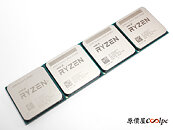

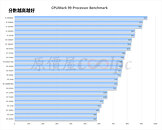
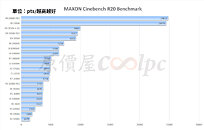

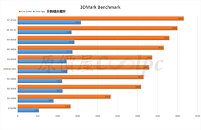

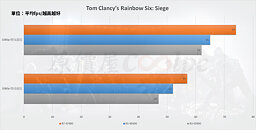
40 Comments on AMD Ryzen PRO 4750G, PRO 4650G, and PRO 4350G Tested
As far as i understand there will still be 4+4 cores with in a CCX instead of unified 8 cores.
The diagram itself is just a visualization, when you look at the Zen 2 CCD die shot the CCX are top and bottom instead of left and right ;)
So what series will the Zen3 lineup be? 5xxx???
So Zen CPUs were 1000-series but Zen APUs were 2000-series, 2000 CPUs = 3000 APUs, and now 3000 CPUs = 4000 APUs. Zen 3 CPUs will thus be 4000-series and Zen 3 APUs will be 5000-series.
It's weird and confusing but it is what it is.
www.hardwaretimes.com/what-is-a-ccx-vs-ccd-in-an-amd-ryzen-processor/
I can hear someones Grandma being sold a PC in Best Buy right now.
It's getting harder and harder to keep track for sure.
Those are strong words - never going to be. Bad idea to make statements like this.
I agree that the package will always impose some limits but GPU's are not standing still. Efficiency improves all the time.
The real question is the low end discrete market even worth it? At some point iGPU's will be fast enough (some would aregue they already are) that buying a low end discrete GPU is pretty pointless. Currently the only advantage is see on those low end cards is their own dedicated VRAM where as APU uses system memory. Once HBM or other similar solution gets cheap enough and is 3D stacked on top of the die the low end GPU's lose their last advantage. Everything is getting more integrated and smaller.
Besides the low end GPU market has been in decline for years and the sort of people who buy those cards (corporate, OEM, esports) have or are migrating to all in one solutions like APU's. Now with up to 8c/16t and Zen2 IPC, decent iGPU and in case of Pro models enterprise security there's very little reason left to buy a discrete low end GPU just to get a picture and maybe play some casual games.
That's also the reason GPU prices have gone up. Discrete GPU's are more of niche thing now. Better hope it will not end up like the discrete audio card market where integrated sound is finally good enough for most people and only enthusasts still buy discrete cards in low volumes and high prices.